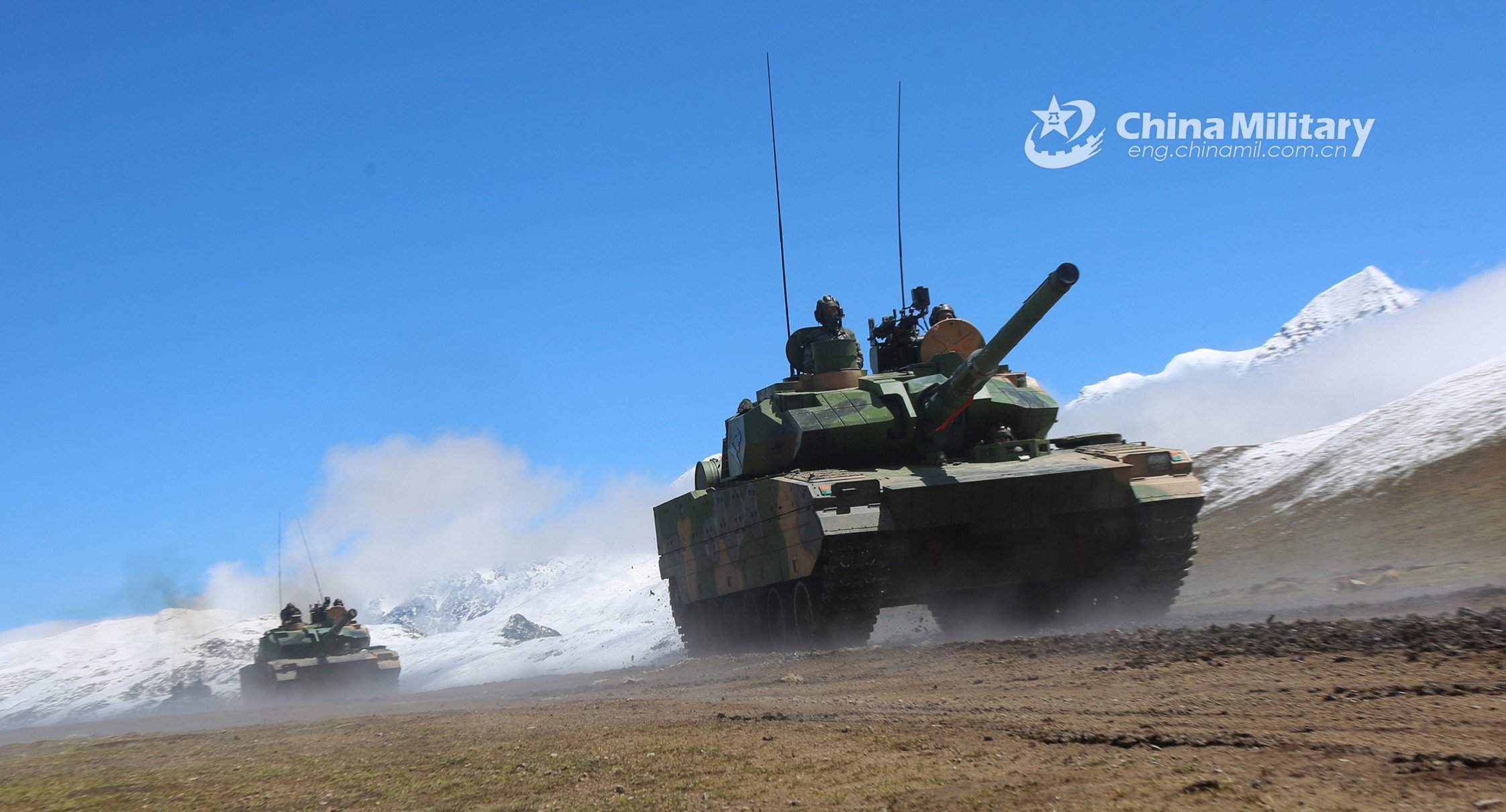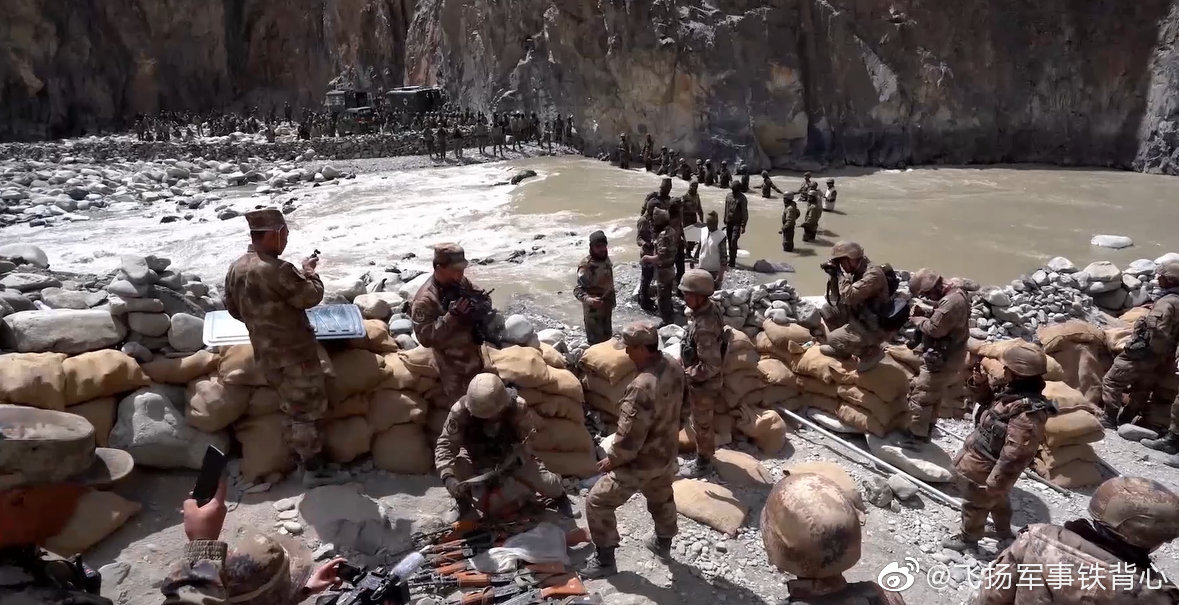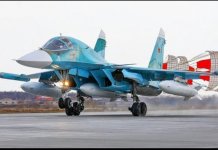Tensions between India and China stem from an ill-defined disputed border called Line of Actual Control (LAC) that spans over 3,440 kilometers running through rugged terrains and treacherous mountains.
Bangladesh Looks To Buy Eurofighter Typhoons, Sideline Rafale Fighter Jets Due To India Factor – Expert
Mid-Air Collision: F-22 Raptor, F-35 Fighter Jet Almost Crashed Into Each Other During US Air Force Drills
Soldiers on both sides of the disputed India-China border are expected to dig in for the winter after the collapse of talks between the two countries and India should be ready for frequent, low-intensity, long-drawn confrontations along the LAC, according to experts.
Both India and China have been asserting their claims along the LAC with the construction of border infrastructure. The construction of a high-altitude airbase by India has been considered as one of the flashpoints for the Galwan valley clashes resulting in casualties on both sides.
Reports of the People’s Liberation Army (PLA) forming death squads who were armed with rods, spears, spiked clubs along with an indigenous weapon called Guandao which resulted in the deaths of 20 Indian soldiers while China confirmed four of their soldiers were killed. This was the first fatal encounter between both military powers since 1975.
The aftermath of the clashes saw a marathon of military-to-military Corps Commander-level talks. The most recent of which was the 13th round of negotiations at Moldo, situated on the Chinese side of the LAC. These talks reaped no dividends continuing the border impasse.
The EurAsian Times had recently reported that the Indian Army halted Chinese transgression into Arunachal Pradesh, leading to a minor faceoff. This incident took place over 10 days prior to the 13th round of Corps Commander level talks.
The situation was soon resolved following the intervention from army commanders from both sides. Prior to that, on August 30, 2021, more than 100 PLA troops had crossed the LAC into Uttarakhand’s Barahoti sector.

A series of claims and counterclaims have kicked off a new flashpoint in Sino-Indo tensions along the Line of Actual Control. A tersely worded editorial by the Communist Party of China (CCP) mouthpiece, Global Times seemingly served as a warning.
Since then, social media has been flooded with videos and images of what looks like injured Indian soldiers being paraded by PLA troops.
Are India-China border tensions again running high? Is there a possibility of another Galwan like incident? The EurAsian Times interacted with leading Indian military veterans, and international experts to understand the situation.
India-China Border Tensions: What Do Army Veterans Say?
Speaking to the EurAsian Times about the current status of China, Rear Admiral Vineet Bakhshi (Retd) said – “The Chief of Army Staff has given a tacit statement that the Chinese are here to stay. Let’s accept it at face value, as the COAS is not known to be jingoistic like the Global Times.
China has scant regard for international agreements unless it suits them.
“During my career, I have had direct dealings on two occasions with the Chinese, once in the early 90s and again a decade later. There was a sea change in their attitude. They carefully observed the limited changes we had made, our archaic ways, versus their own rapid progress,” he recounted.
Speaking about the possibility of future clashes, Bakhshi said, “There is a distinct possibility that clashes could transpire in areas where the Chinese feel that they have a distinct military advantage. They don’t like to lose face and are not known for their humility.
For India, it means increasing our border preparedness as well as our capabilities to match those of the Chinese.”

India-China: Who Dares Wins?
Military author, columnist and analyst, Colonel Rajinder Singh Kushwaha (Retd), told EurAsian Times – “Why are we negotiating with China? So, what if talks have failed? Let us be very clear ….China was untrustworthy. China had been encouraged by our appeasing acts in the past. We are still behaving like nincompoops. The release of Galwan incident photos should not worry us.”
Col. Kushwaha went on to say, “I do not believe China has the gumption to involve India militarily now when its economy is in a tailspin for downward slide and annexation of Taiwan is its primary objective now. The amalgamation of Taiwan is the key to Xi Jinping’s dream of becoming a superpower leaving the United States behind.”
F-15 Strike Eagle Jet Demonstrates Capability To ‘Wipe Out’ Terror Facilities With ‘Heavy-Duty’ GBU-72 5K Penetrator Bomb
“Involving militarily with India would upset this (Taiwan) dream. India is no military pushover. Also, political leadership is not afraid of taking offensive and aggressive decisions. China knows Modi — a friend turned foe is dangerous, but Modi has the courage to take resolute decisions,” Col. Kushwaha said.
Former Intelligence Officer Col. NN Bhatia (Retd) told the EurAsian Times: “We know the outcome of the latest Corps Commander level talks. The incident in Arunachal was a forerunner to the Chinese stance at the recent talks. The repeated lessons for us are: First and foremost, please do not trust what China says or promises.

“China will not accept India rising as a challenger unless India overtakes China in the power matrix. China will not budge from its main objectives with occasional tactical shifts. China will not trust India to control any part of its trade. The idea of India and China joining other Asian powers for a bright Asian Century is a mirage.
“For China, the Asian century means China’s century. China will no longer have pretenses about keeping equidistance with India and Pakistan. It will not shy away from backing Pakistan except (perhaps) joining in a war against India, even if Pakistan melts down economically. Pakistan is essential to keep India in check. China now understands that India has firmly moved away from it and will not reverse course. It will not waste effort to placate India or address its concerns.
“This is not a favorable situation for India. One of the objectives of our grand strategy – to prevent Sino-Pak collusive threat developing – has come unstuck. However, it is not catastrophic either. India must strategize and make plans with clarity of mind and free from doubts.
“Our key objectives should be: Firstly, realism must replace idealism. State own goals clearly; preventing any country exercising hegemony in Asia; free and open regional and global commons; prevention of hostile influence spreading in areas of interest to us; promote the concert of countries sharing common values; not harping anymore on not joining alliances. We may not overtly join immediately though.
The response of China’s Western Theatre Command on the 13th military talks indicates China will not budge from the new locations PLA occupies presently. Whether China will escalate the situation further depends on the desperation of Xi Jinping to divert attention from his internal woes,” said former Special Forces officer, author and analyst, Lieutenant General PC Katoch (Retd).

Strategic affairs analyst Major General Raj Mehta (Retd) said it is not prudent to comment on allegations and claims. The General had earlier described these reports as “typical psychological warfare.” Speaking about the way forward, former Director-General Mechanised Forces, Lieutenant General Dalip Bhardwaj (Retd) said, “When dealing with China you have to be patient, any agreement will take time until then be prepared and keep your powder dry.”
International Analysts Link India To Taiwan
Dr. Indu Saxena, Deputy Director of Indo-Pacific Researchers and a member of the International Security Section of the American Political Science Association (APSA) told the EurAsian Times – “The additional and multi-tier deployment at LAC by China is quite unreasonable and undesirable for the status quo. A large-scale build-up by both sides indicates the continuity of border tension between China and India.
“China’s increasing military mission at Demchok and Depsang Plains is a big concern for India’s security and sovereignty and a potential threat for the stability of the Himalayan region,” Dr. Saxena cautioned.
Andrew Korybko, a Moscow Based political analyst shared his take on the issue – “The latest developments suggest that the situation is quickly deteriorating along the LAC due to the lack of progress that’s been made on resolving the issue, which each side blames on the other.

In particular, while India blames China, some in China and its media have suggested that the US might be partially to blame for what Beijing described as India’s unreasonable and unrealistic requests during the latest talks.
“The dynamics are such that external parties can certainly influence this tense situation in negative and positive ways. The US has an interest in preventing a compromise so as to continually exploit their problems for the purpose of justifying the further expansion of its military-strategic coordination with India through the Quad in order to put more pressure on China as part of the New Cold War.
“Russia could, in theory, play the opposite role if requested to do so by its fellow BRICS, RIC, and SCO partners to help them mediate a de-escalation or at least agree to freeze the situation before the harsh winter begins, though no such requests appear to have been made by either so far.
“Even in the event that another Galwan-like clash doesn’t occur, this unresolved issue could worsen China and India’s working relations within BRICS, RIC, and the SCO, thereby negatively affecting all three multipolar formats which would by default advance America’s divide-and-rule interests in Eurasia.

Seeing as how the problem has already remained unresolved for so long and recently resulted in such a noticeable escalation of tensions, it’s unlikely that a peaceful solution will be forthcoming.
“Therefore, the most likely forecast is that Chinese, Indian military tensions will remain in place until at least the spring of 2022; the U.S. will attempt to exploit this as explained; Russia might offer to help de-escalate but probably won’t be requested by both; trade ties which actually increased over the past year despite last summer’s Galwan River Valley clash will continue to flourish .”

Long, Undeclared War With China
Philippines-based, South Asian defense analyst, Miguel Miranda shared his assessment with the EurAsian Times: “I am convinced the Government of India must brace for a long undeclared war with China over scraps of territory along the entire LAC.
The pattern that has emerged since 2017 is now very clear…the PLA is committed to enlarging their own ‘space’ and when possible, breaking off bits of territory from Nepal and Bhutan, while improving their own border defenses to discourage any future military response.
This unspoken policy and the behavior it involves is not exceptional–the exact same dynamics were at work from 2012 onward when China used military and diplomatic pressure for annexing the most distinct features of the South China Sea.
The stakes are high. China has finely-tuned propaganda/messaging resources through its state-owned broadcasters and gov’t monitored social media that shape how the world sees the China-India rivalry.
As we have seen in Hong Kong, where China’s approach to the youth-led opposition was to pressure them until their resistance ebbed, as well as in Taiwan, where frequent PLAAF patrols are forcing the island nation to scramble its jets almost every day…the strategy here is to be indecisive and protracted yet constantly threatening.
For the PLA at large, even with the immense conventional firepower at their disposal, it’s better to erode resistance over years than risk a bloody war. Exhausting the enemy’s will to fight does pay off.
This approach will be very difficult for the Indian military and leaves the soldiers preoccupied, trying to anticipate PLA activities along the LAC. Then there’s the potential for actual violence and the lack of any real venues for substantial talks on cooperation and de-escalation.
I hope it’s now clear to the Indian military what kind of trap China is laying. It’s a slow-boil confrontation over a stretch of geography that’s impossible to control in its entire length 24/7 all year round.
- Aritra Banerjee is a defense journalist who has worked in both online and print media. He has laid an emphasis on issues related to military human resources, tactical psychology, military-media relations, professional military education, and combat fitness. He can be reached on email: aritrareporter@gmail.com.
- Follow EurAsian Times on Google News





